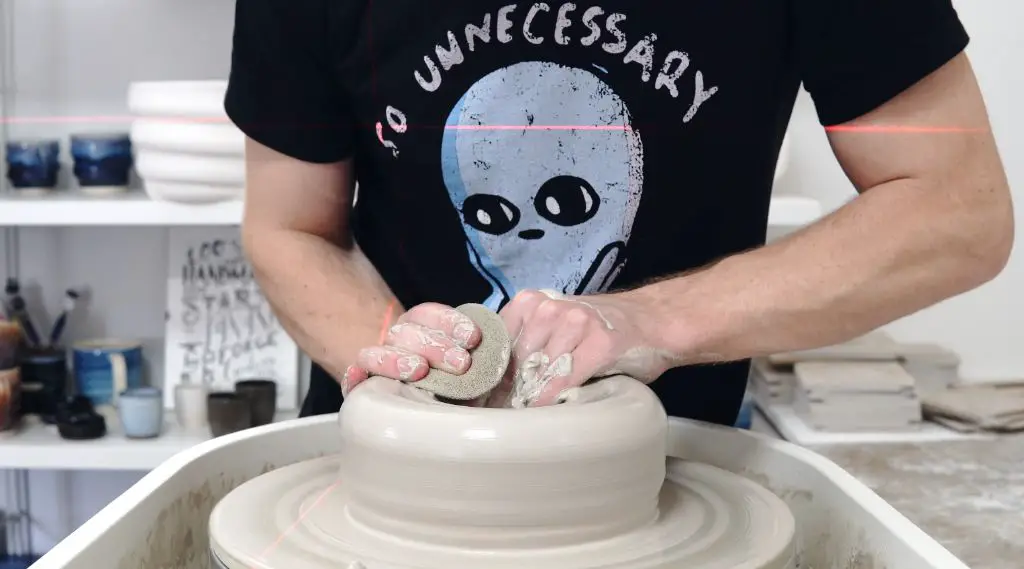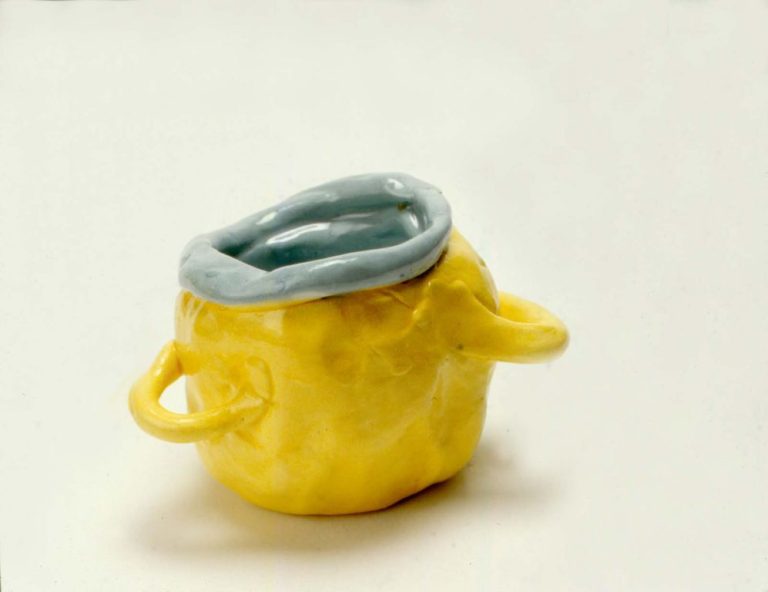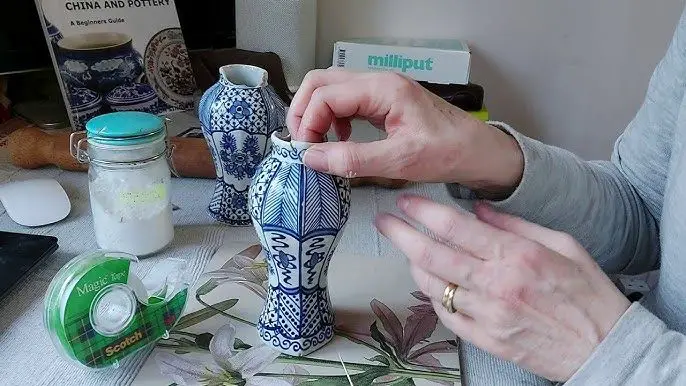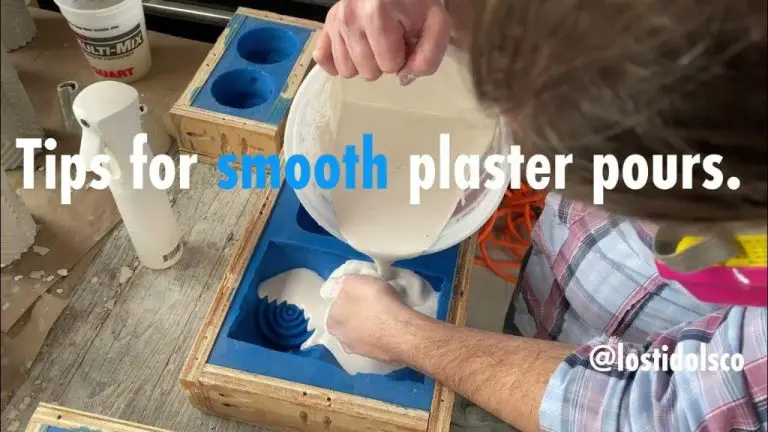What Do You Wear When Throwing Pottery?
Pottery throwing (also known as wheel throwing) is a process of using a potter’s wheel and centrifugal force to shape clay into vessels and other ceramic objects. As the wheel spins, the potter applies pressures to the clay to raise the walls and create shapes like bowls, mugs, vases, etc. It requires coordination and practice to center the clay on the wheel and manipulate it into the desired form.
When throwing pottery, it’s important to wear comfortable clothing that allows free range of motion without getting in the way. Baggy sleeves or loose jewelry can catch on spinning clay and cause accidents. Proper footwear is also key for operating the pedal that spins the pottery wheel. In general, clothing choice for throwing impacts safety, cleanliness, and comfort throughout the messy clay throwing process.
Shirt
When throwing pottery, choose a shirt that fits close to the body and covers the arms. Avoid loose or dangling shirts that can get caught on the wheel or other equipment. Tuck in shirt tails or tie them back to keep them out of the way. Button shirts up fully to prevent any loose material from interfering with the throwing process.
Close-fitting t-shirts and athletic shirts work well for throwing pottery. Avoid baggy shirts or ones made from loose, flowing fabrics like silk. Stick to breathable cottons and performance fabrics that won’t get weighed down when wet from clay and water. For women, sports bras or close-fitting camisoles under the shirt can help contain loose material.
The optimal pottery throwing shirt is snug but allows full range of motion. Look for moisture wicking performance materials to stay cool and dry as you work. Avoid scratchy seams or tags that could chafe skin after long periods at the wheel. For safety and comfort, a well-fitted shirt is key.
Aprons
Aprons are an essential part of any potter’s wardrobe. They serve the important purpose of keeping your clothes clean while working with messy clay. Aprons come in many different materials and styles to suit your preferences.
The most common pottery apron materials are canvas, leather, and rubber. Canvas aprons are lightweight and breathable. Leather offers more durability for heavy-duty work. Rubber aprons provide a waterproof barrier against splashes.
Aprons come in waist, bib, and sleeve styles. Waist aprons tie around your middle to protect just your front. Bib aprons have an upper piece that also covers your chest and shoulders. Sleeve aprons add coverage for your arms too. Choose the style based on your needs.
Look for an apron made of a material that is comfortable and suits your pottery work. Make sure it provides coverage for the parts of your body that tend to get dirtiest. A good apron is essential for keeping your clothing clay-free.
Pants
When throwing pottery, it’s important to wear flexible, stretchy pants that allow free range of motion. Tight pants can restrict movement which makes throwing more difficult. Loose, lightweight sweatpants or yoga pants are ideal. Avoid stiff materials like denim that don’t stretch. According to the website Pottery Crafters, “It’s best to wear old loose-fitting pants. If your pants are too tight, it may be hard for you to bend over the wheel, or your pants can be smashed into your skin while you work.” Stretchy athletic pants or leggings enable you to fully bend, squat, and move around without any restrictions.
Shoes

When throwing pottery, it’s important to wear sturdy, slip-resistant shoes with arch support (Source). The pottery studio can be a messy environment with water, clay scraps, and wheel splatter on the floor. Flat shoes like sandals or ballet flats are not a good choice as they offer little traction. Similarly, shoes with heels are unstable for working at a pottery wheel. The best shoes for pottery have thick non-slip soles to prevent slips and falls. They should also have closed toes for protection. Shoes will get dirty from clay and glaze drips, so it’s smart to wear an older pair instead of brand new shoes. Look for shoes with good arch support to comfort your feet during long hours at the wheel. Sneakers, clogs, or lightweight work boots are ideal options. Avoid flimsy shoes like flip flops or slides which offer no protection. Sturdy pottery shoes will support your feet and keep you safe in the studio.
Jewelry
When throwing pottery on the wheel, it’s best to avoid wearing dangling jewelry that could get in the way or damage the clay. Rings, bracelets, and necklaces that extend beyond the wrist or hang low can catch on clay as it spins on the wheel, ruining the piece or even causing injury.
As one experienced potter advises, “Never wear bling bling when throwing” (source). Solid jewelry without loose parts is safest when working with clay. It’s also wise to remove rings and bracelets that could get wet, dirty, or scratched during the process.
For potters wearing an engagement or wedding ring, it may be preferable to remove the ring temporarily while throwing just to prevent damage or loss (source). But leaving on a snug ring is unlikely to cause problems if preferred.
In summary, dangling, loose jewelry poses the greatest risk when throwing and merits removal. But solid rings and bracelets may be kept on if securely fitted.
Hair
When throwing pottery, it is important to tie back long hair. Having long hair down can be dangerous when working on a pottery wheel, as it could get caught in the spinning wheel. The best practice is to tie long hair completely back in a ponytail, bun, or braid to keep it secure and out of the way. If you have bangs or layers, use hair clips or a headband to keep them back as well. For short hair, you may be able to get away with leaving it down if it doesn’t extend past your chin or neck. However, pulling even short hair back is recommended for optimal safety and comfort when throwing.
As evidence from this throwing pottery tutorial video, potters with long hair always tie it up before throwing on the wheel.
Glasses
Many people who wear glasses wonder how to keep them securely in place when throwing pottery. The centrifugal force and motions involved in working on the pottery wheel can easily dislodge glasses if they are not properly secured.
One solution is to invest in glasses specifically designed for sports or active use. These often have rubber grips and adjustable straps to keep the glasses tight against your head as you move. Brands like Rudy Project, Oakley, and Nike make sports glasses with these features.
You can also look for adjustable straps, chains, or cords that attach to the ends of your regular glasses and loop around the back of your head for extra stability. Some opticians carry these add-on retention devices. Alternatively, athletic suppliers like Under Armour and Yup Vision sell neoprene straps that slide onto the earpieces and provide a snugger fit.
Tying a bandana or headband over your glasses is another quick DIY trick to keep them in place when throwing. Just fold and tie the fabric so it presses the glasses firmly against your temples and the back of your head. You may have to readjust periodically, but it helps buffer against slipping.
Lastly, be sure to frequently push your glasses back up the bridge of your nose as you work. Letting them slide down increases the chances of them bouncing off during vigorous throwing motions. Staying aware of any slippage and proactively readjusting will go a long way in keeping your vision clear and glasses secure.
Hand and Wrist Protection
Protecting your hands and wrists from repetitive stress injuries is crucial for potters. The repetitive motions of wedging, throwing, and trimming clay can take a toll over time. Wearing proper gloves or braces can help reduce strain.
Some potters prefer to wear tight-fitting cotton or leather gloves while throwing. The gloves protect against abrasions and keep clay from drying out the hands. However, gloves can reduce dexterity. Some potters only wear them while wedging clay. Thinner gloves may allow for more fingertip control at the wheel. See community discussion on throwing with gloves here: https://community.ceramicartsdaily.org/topic/3626-throwing-in-gloves/
For hand and wrist support, braces or guards can help stabilize joints that get overworked. These supportive gloves cushion against compression during throwing. They also provide warmth, which keeps muscles relaxed. Some options are open-fingered to allow flexibility. Guards with splints prevent overextension. See product options for pottery wrist braces https://www.dickblick.com/categories/pottery/accessories/
Taking breaks and doing stretches is also important. Overworking the hands without rest can cause long-term damage. Slowing down when hands become fatigued can help reduce chances of injury.
Conclusion
When throwing pottery, it’s important to wear clothing that is comfortable, protects your skin, and allows for full range of motion. Key clothing tips include:
- Wearing a long-sleeved shirt or one with sleeves you can roll up to avoid clay contacting skin directly.
- Opting for an apron, smock, or old shirt to keep clay off your clothes underneath.
- Choosing stretchy pants or leggings you can move freely in.
- Wearing closed-toe shoes to protect feet from stepping in clay.
- Pulling long hair back so it stays out of wet clay.
- Removing bulky jewelry or accessories that could catch on clay.
- Using gloves or wrist guards if you have sensitivities.
Selecting the right versatile clothing for pottery throwing ensures you can focus on your work, not your outfit. With preparation for getting messy and the ability to move unrestricted, you’ll be ready to throw clay while staying comfortable.



